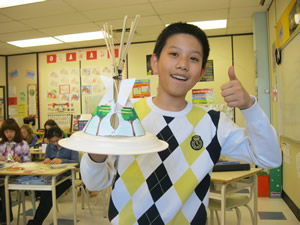Grants to Schools to Promote Understanding through Indigenous and Non-Indigenous Student Exchange
Program Guidelines

In Alberta today Indigenous and Non-Indigenous students often have no contact with each other. This leads to stereotyping, fear, and misunderstanding. In order to promote understanding between Alberta’s Indigenous and Non-Indigenous students Canadian Multicultural Education Foundation in partnership with the Alberta Teachers’ Association is offering grants of $500 to $5,000 to Alberta schools to cover 80% of the cash expenses for student exchanges. One partner must be predominantly Indigenous and the other predominantly non-Indigenous. The exchange must extend over at least a month, either through actual visits or through electronic contact. The program must be designed so as to maximize students learning to understand the other’s values, aspirations and challenges, family life and community life – maximize students learning to respect the others as individuals, not stereotypes.
Promoting Understanding
Terms
Grant funds may be used to cover transportation, admission fees to museums or parks, and fees for special resource persons or materials needed for the program, but not meals.
Application evaluation will be based on:
- How well planned the activities are and how likely it is that activities will help students develop understanding of each other. (40%)
- How well the program orientation will prepare students for the exchange. (20%)
- How extensively the schools and communities will be involved in the exchange. (10%)
- How well potential problems have been anticipated and planned for. (10%)
- How carefully the budget has been planned. (10%)
- How well follow-up activities have been planned. (10%)
Canadian Multicultural Education Foundation will attempt to assist applicants in planning their exchange programs and will try to help in finding partners.
A total of $20,000 has been allocated for this program. Apply as soon as possible. Applications will be accepted until all funds are committed.
Applicants will be notified within six weeks of application submission. The exchange must be completed by June, 2017.
Applicant schools will receive 80% of funds in advance of the program. The remaining 20% will be distributed upon submission of satisfactory narrative and financial report.
To Apply
Two teachers who have matched themselves should use the Application for a Grant form (Word doc).
Teachers requesting assistance in finding a match should use Application for Assistance in Finding an Exchange Teacher Partner form (Word doc).
When using either of the above forms, please follows these steps:
- Save the Word document to your computer hard-drive.
- Fill-out the form in Word on your computer.
- Attach a copy of the completed form (.doc file) to an eMail and send it to CMEF.
Sample Exchanges
These are not suggestions, but presented simply to provide ideas.
Elementary School Exchange
Mrs. Sharma’s grade 4 class at the King George Elementary School in Mill Woods and Mr. Cardinal’s grade 4 class on the Eagle First Nation Reserve, just outside Edmonton, met once a week for five weeks. Lessons included:
- Students planning and leading neighborhood and reserve tours.
- Students pairing up and creating honour posters telling about each other’s interests, goals, and strengths.
- Studying social studies topic 4.x and 4.y together, culminating in a visit to Fort Edmonton together.
- When meeting at the Eagle First Nation School, a presentation from an Eagle elder.
- When meeting at King George Elementary, a presentation by Alexis Mercredi, prominent First Nations children’s book writer.
- Keeping a journal of the experience
- Follow-up activities included creating reflection works on the experience and correspondence via email.
High School Exchange
The Social Action Club at Pope John Paul High School in Edmonton was teamed with the Grade 11 class at Beaver Mountain First Nation School. Through Internet and Skype conversations the students decided that they wanted to investigate and teach their schoolmates about the problems of racism and racial stereotyping in Canada today. Over a period of two months the Edmonton students and the Beaver Mountain students jointly decided to divide the question into four subtopics and form four committees to address each topic and plan presentations for their schoolmates.
In April eight students and the teacher-sponsor from Pope John Paul High School flew to the Beaver Mountain First Nation Reserve for a three day/two night visit, attending classes, touring the reserve, having dinner in homes of students, sleeping in gym. On the last day they presented their work on racism to an assembly of the Beaver Mountain High School students. The question and answer session was quite lively.
Two weeks later eight grade 11 students from the Beaver Mountain High School flew to Edmonton. They attended classes with their counterparts at Pope John Paul High School, staying in the homes of the Pope John Paul High students and joining in the students’ family and social life. Their visit also included joint presentations sharing what they learned with Pope John Paul students – again lively sessions.
After the Beaver Mountain students returned home the students at the two schools created an electronic report on the experience, including photos, descriptions of the activities and reflections on the learnings – the learnings of both those who traveled and those who met the visitors at their own school. Many students maintained the friendships they had built via email and Facebook.
